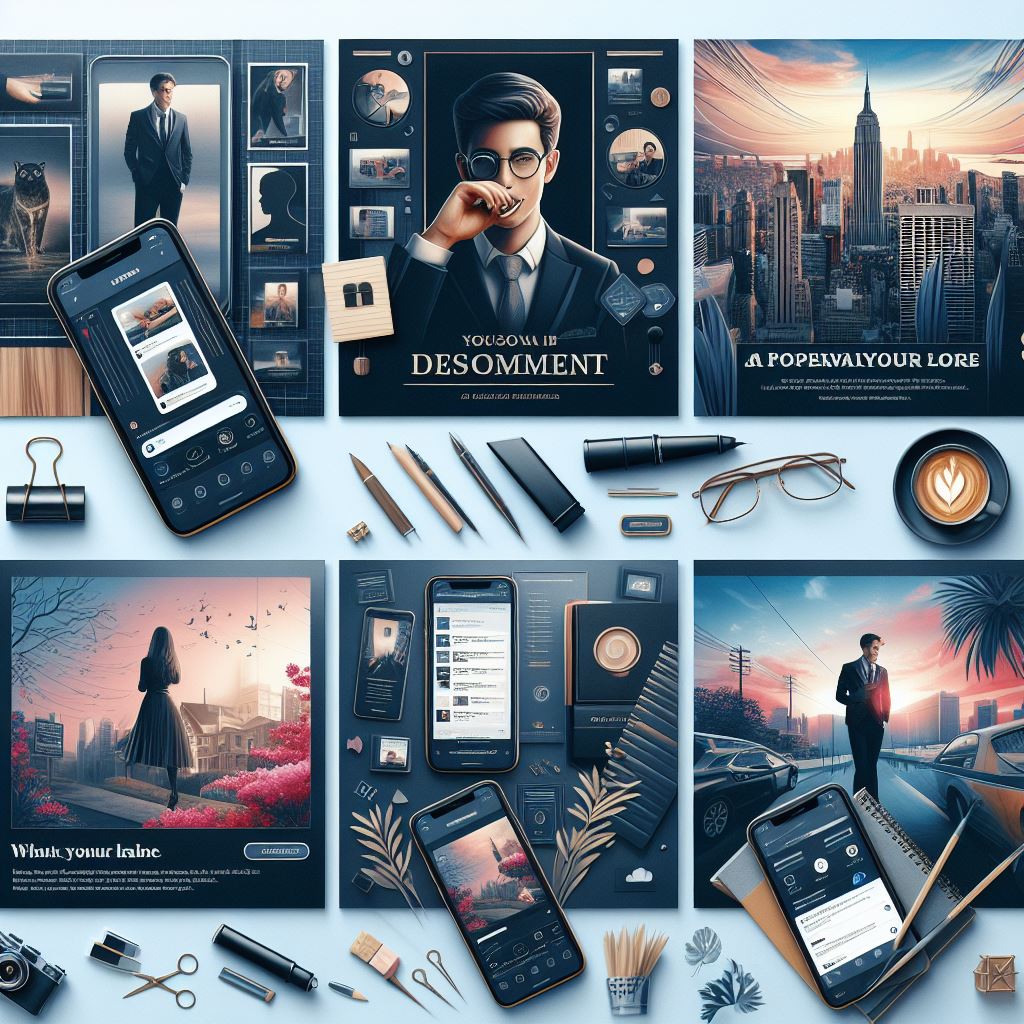In today’s highly competitive market, understanding how advertisements attract attention is vital for any business looking to stand out. Advertisements are more than just flashy visuals; they are a sophisticated blend of design, psychology, and strategy. This article will delve into the intricacies of advertisement attraction, revealing the secrets behind successful campaigns.
At Gold Creek LLC Advertising, we pride ourselves on being the best in the industry. Our expertise ensures your advertisements not only catch the eye but also engage the mind. Act now and reserve your ad space today!
The Power of Visual Design

Visual design plays a pivotal role in capturing the attention of potential customers. Elements such as layout, imagery, typography, and color schemes are strategically used to create an appealing and memorable advertisement. The visual hierarchy helps guide the viewer’s eye to the most important information first, ensuring that the message is effectively communicated.
One critical aspect of visual design is the use of contrast. High contrast between background and text, or between different elements, makes the advertisement stand out and makes it easier for viewers to read and comprehend the message. Additionally, the use of white space, or negative space, can help in avoiding clutter and highlighting the key components of the ad.
Another essential element is the use of imagery. High-quality, relevant images can evoke emotions, tell a story, and create a connection with the audience. Whether it’s a product photo, an infographic, or an abstract design, the imagery should align with the brand’s identity and message.
Typography also plays a significant role in visual design. The choice of fonts, their size, and arrangement can significantly impact readability and the overall aesthetic of the advertisement. A well-designed ad uses typography to not only convey the message clearly but also to enhance the overall visual appeal.
Psychological Triggers in Ads

Understanding and leveraging psychological triggers is essential for creating advertisements that resonate deeply with the audience. These triggers tap into fundamental human emotions and cognitive biases, making the ad more compelling and memorable.
One powerful psychological trigger is social proof. People are more likely to trust and follow the actions of others, especially if those others are seen as similar to themselves. Incorporating testimonials, reviews, or endorsements from satisfied customers can significantly boost the credibility of an advertisement.
Another effective trigger is the principle of scarcity. When something is perceived as limited or exclusive, its value increases in the eyes of consumers. Phrases like “limited time offer” or “only a few left” create a sense of urgency, prompting quicker decision-making and action.
The concept of authority is also crucial. Ads that feature experts, celebrities, or authoritative figures can influence perceptions and behaviors. When an authoritative figure endorses a product, it adds a layer of trust and legitimacy, making the ad more persuasive.
Additionally, the use of emotional appeal can be highly effective. Ads that evoke strong emotions such as happiness, nostalgia, fear, or excitement can create a lasting impact. Emotional connections can drive consumers to take action, whether through purchasing a product, sharing the ad, or engaging with the brand.
Lastly, the principle of reciprocity can be utilized. When an ad offers something of value, such as a free trial, sample, or valuable information, consumers may feel inclined to reciprocate by making a purchase or engaging with the brand.
Effective Use of Colors in Advertising

Colors play a pivotal role in the effectiveness of advertisements. They not only capture attention but also evoke specific emotions and associations, making them a powerful tool in the advertiser’s arsenal.
Different colors can elicit different responses from viewers. For instance, red is often associated with excitement, passion, and urgency. It’s commonly used in clearance sales or to draw attention to important messages. On the other hand, blue tends to evoke feelings of trust, calm, and reliability, making it a popular choice for financial institutions and healthcare providers.
Similarly, yellow is known for its ability to grab attention and convey happiness and optimism. It is frequently used in ads targeting younger audiences or promoting products related to leisure and entertainment. In contrast, green signifies nature, health, and tranquility, often employed in advertisements for eco-friendly products or wellness services.
Moreover, the color black communicates sophistication, luxury, and elegance. High-end brands often use black to create a sense of exclusivity and high value. Meanwhile, white symbolizes purity, simplicity, and cleanliness, making it a favorite in ads for technology and healthcare products.
Using a harmonious color scheme can also enhance the overall aesthetic appeal of an advertisement. Complementary colors, which are opposite each other on the color wheel, can create a vibrant and visually pleasing contrast, while analogous colors, which are next to each other, offer a more harmonious and cohesive look.
Incorporating colors effectively requires an understanding of the target audience and the brand’s identity. By strategically choosing and combining colors, advertisers can create more impactful and memorable ads that resonate with viewers on a deeper level.
Emotional Engagement and Storytelling
Emotional engagement and storytelling are crucial elements in the world of advertising. They have the power to transform a simple advertisement into a compelling narrative that resonates deeply with the audience.
When an advertisement taps into the viewer’s emotions, it creates a lasting impression. Emotions such as happiness, sadness, fear, and surprise can drive people to take action, making them more likely to remember and respond to the ad. For example, a heartwarming story about family bonds in an ad can evoke feelings of warmth and nostalgia, encouraging viewers to associate those positive emotions with the brand.
Storytelling in advertising helps to humanize brands and make them more relatable. By weaving a narrative, advertisers can convey complex messages in a way that is engaging and easy to understand. A well-crafted story can draw viewers in, making them feel invested in the outcome and more likely to connect with the brand’s message.
Consider the success of advertisements that tell a story about overcoming adversity or achieving dreams. These stories often feature relatable characters and situations, allowing viewers to see themselves in the narrative. This connection fosters a sense of empathy and loyalty towards the brand.
Moreover, stories can make advertisements more memorable by providing context and meaning to the brand’s message. A narrative structure helps to organize information in a way that is easier for the brain to process and recall. Instead of just presenting facts or features, storytelling allows brands to showcase the benefits and values in a more engaging manner.
Ultimately, the combination of emotional engagement and storytelling can turn a simple advertisement into a powerful tool for building brand loyalty and driving consumer action. By creating ads that resonate on an emotional level, brands can forge deeper connections with their audience and stand out in the crowded advertising landscape.
Call-to-Action Strategies

Effective call-to-action (CTA) strategies are essential for converting viewer interest into tangible actions. A well-crafted CTA can be the difference between a successful ad campaign and one that falls flat. Here are some key strategies to consider:
- Clarity and Precision: Your CTA should be straightforward and easy to understand. Avoid vague language and be explicit about what you want the audience to do. Phrases like ‘Sign Up Now’ or ‘Get Your Free Trial’ leave no room for confusion.
- Urgency and Scarcity: Creating a sense of urgency can motivate viewers to act quickly. Phrases like ‘Limited Time Offer’ or ‘Only a Few Left’ can instill a fear of missing out, prompting immediate action.
- Value Proposition: Highlight the benefits of taking action. If the audience understands what’s in it for them, they’re more likely to respond. For example, ‘Save 20% When You Order Today’ clearly communicates the advantage of acting promptly.
- Visual Appeal: The design of your CTA button or link should stand out. Use contrasting colors and bold fonts to draw attention. Additionally, placing your CTA in a prominent location ensures it’s easily noticed.
- Action-Oriented Language: Use verbs that inspire action. Words like ‘Discover,’ ‘Join,’ ‘Get,’ and ‘Learn’ are more compelling than passive phrases. They create a sense of movement and progress.
- Testing and Optimization: Continuously test different CTAs to see which ones perform best. A/B testing can provide insights into what resonates most with your audience, allowing you to refine your approach.
By implementing these strategies, you can enhance the effectiveness of your CTAs and drive higher engagement rates. Remember, the ultimate goal of any advertisement is to encourage the audience to take a specific action, whether it’s making a purchase, signing up for a newsletter, or downloading a resource.
Act now and reserve your ad space today! Visit goldcreekllc.net to get started and see how effective CTAs can boost your campaign’s success.

